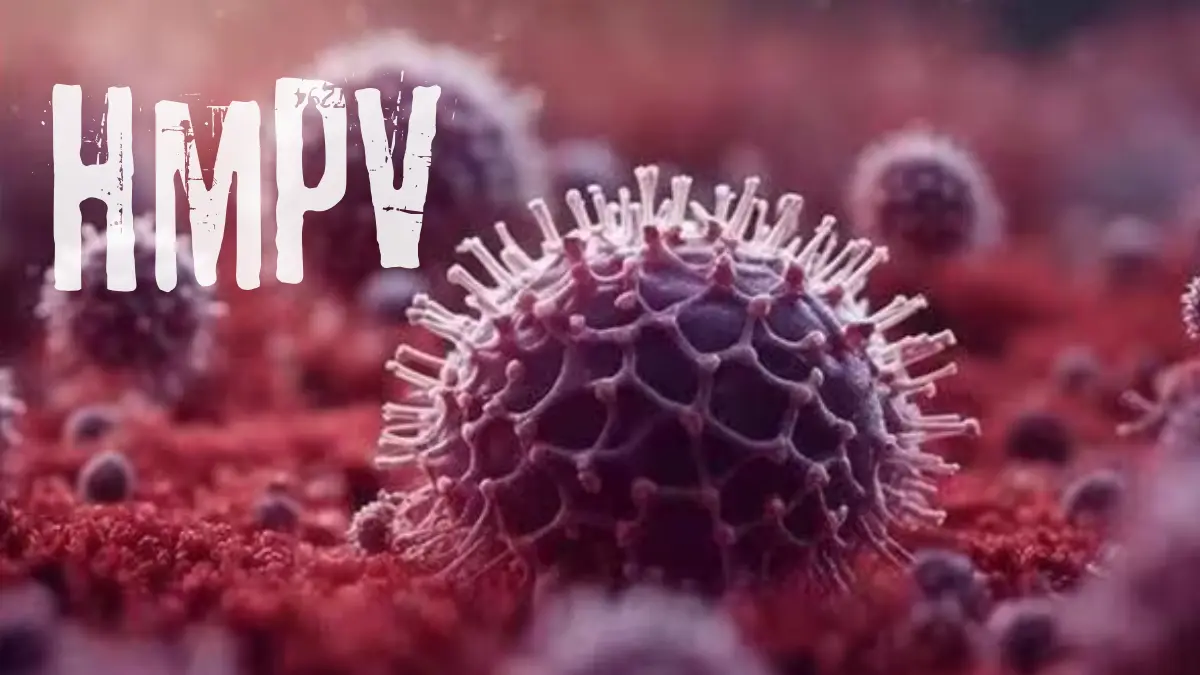Human Metapneumovirus (HMPV) is a significant respiratory pathogen first identified in 2001. This virus belongs to the family Paramyxoviridae and is closely related to respiratory syncytial virus (RSV). It is recognized as a leading cause of respiratory infections across all age groups, especially in young children, the elderly, and immunocompromised individuals. Despite its relatively recent discovery, HMPV has emerged as an important subject of research due to its widespread impact on global public health.
The Structure and Characteristics of HMPV

HMPV is an enveloped, negative-sense, single-stranded RNA virus. It possesses a genome that encodes for nine proteins, including structural proteins such as the fusion protein (F), the nucleoprotein (N), and the matrix protein (M). The F protein is particularly noteworthy, as it plays a crucial role in the virus’s ability to infect host cells by facilitating membrane fusion.
Phylogenetically, HMPV is divided into two main groups, A and B, which are further subdivided into subgroups A1, A2, B1, and B2. This genetic diversity contributes to the virus’s ability to evade the immune system and re-infect individuals throughout their lives. The virus is highly similar to RSV in both structure and replication cycle, which has provided valuable insights into its behavior and pathogenicity.
Epidemiology and Transmission
HMPV is a global pathogen that causes annual outbreaks, primarily during late winter and early spring in temperate climates. It spreads through respiratory droplets, close contact with infected individuals, or contaminated surfaces. The virus can survive on surfaces for several hours, increasing the risk of transmission in crowded settings such as schools, daycare centers, and healthcare facilities.
Infections are most common in children under five years of age, with a significant proportion of cases occurring in infants. However, adults, particularly those with underlying health conditions, are also susceptible. Seasonal variations in HMPV activity are influenced by environmental factors, human behavior, and co-circulation with other respiratory viruses such as influenza and RSV.
Clinical Manifestations and Diagnosis
HMPV infections range from mild upper respiratory tract symptoms to severe lower respiratory tract illnesses, depending on the patient’s age, immune status, and comorbidities. Common symptoms include cough, fever, nasal congestion, and wheezing. In severe cases, especially among high-risk groups, HMPV can lead to bronchiolitis, pneumonia, and respiratory failure requiring hospitalization.
Diagnosis of HMPV is typically achieved through molecular methods, such as reverse transcription-polymerase chain reaction (RT-PCR), which detect viral RNA in respiratory specimens. Other diagnostic tools include immunofluorescence assays and enzyme-linked immunosorbent assays (ELISAs) to identify viral antigens or antibodies. However, RT-PCR remains the gold standard due to its high sensitivity and specificity.
Pathogenesis and Immune Response
The pathogenesis of HMPV is characterized by its ability to target the epithelial cells of the respiratory tract. Upon entry, the virus replicates within these cells, causing cytopathic effects and triggering an inflammatory response. This inflammation contributes to the clinical symptoms of the infection, such as airway obstruction and wheezing.
The immune response to HMPV involves both innate and adaptive mechanisms. The innate immune system detects the virus through pattern recognition receptors, leading to the production of interferons and pro-inflammatory cytokines. These molecules play a critical role in controlling viral replication and initiating adaptive immunity. The adaptive response includes the activation of T cells and the production of neutralizing antibodies, which help clear the infection and provide temporary immunity.
Despite the immune system’s efforts, immunity to HMPV is incomplete and short-lived. Reinfections are common throughout life, although they tend to be less severe due to partial immunity. This phenomenon underscores the challenges in developing long-lasting preventive measures against the virus.
Impact on Public Health
HMPV poses a substantial burden on healthcare systems worldwide. In pediatric populations, it is a leading cause of hospitalizations for respiratory illnesses, second only to RSV. The virus is also a significant contributor to morbidity and mortality among elderly individuals and those with chronic health conditions such as asthma, chronic obstructive pulmonary disease (COPD), and immunosuppressive disorders.
The economic impact of HMPV includes direct costs associated with medical care, such as hospital stays, diagnostic tests, and treatments, as well as indirect costs from lost productivity. These factors highlight the need for effective strategies to prevent and manage HMPV infections.
Current Management and Treatment Strategies
Currently, there is no specific antiviral therapy or vaccine available for HMPV. Treatment is primarily supportive and focuses on alleviating symptoms and preventing complications. For mild cases, management includes hydration, rest, and over-the-counter medications to relieve fever and congestion. Severe cases may require hospitalization, oxygen therapy, or mechanical ventilation.
In recent years, research has explored potential antiviral agents targeting various stages of the HMPV replication cycle. Monoclonal antibodies and small-molecule inhibitors have shown promise in preclinical studies, offering hope for more targeted therapies in the future. Additionally, advancements in vaccine development are underway, with several candidates in preclinical and clinical trials.
Challenges in Vaccine Development
The development of an effective HMPV vaccine faces several challenges. The genetic diversity of the virus, combined with its ability to evade the immune system, complicates the design of a universal vaccine. Furthermore, the immune response to natural infection is not fully protective, raising questions about the durability of vaccine-induced immunity.
Despite these hurdles, researchers are exploring various vaccine platforms, including live-attenuated, inactivated, and subunit vaccines. Each approach has its advantages and limitations, and ongoing studies aim to identify the most effective strategy. Lessons learned from RSV vaccine development are being applied to accelerate progress in this field.
Prevention and Control Measures
In the absence of a vaccine, preventive measures play a crucial role in reducing the spread of HMPV. Hand hygiene, respiratory etiquette, and disinfection of surfaces are effective strategies to minimize transmission. Public health campaigns emphasizing these practices can help raise awareness and encourage compliance.
For high-risk populations, such as premature infants or individuals with compromised immune systems, prophylactic use of monoclonal antibodies may offer temporary protection during peak HMPV seasons. However, these interventions are not widely available and are often cost-prohibitive.
Future Directions in HMPV Research
Ongoing research efforts aim to address the gaps in our understanding of HMPV biology, epidemiology, and immunology. Advances in molecular virology are providing new insights into the virus’s replication mechanisms and interactions with host cells. These findings have the potential to inform the development of novel therapeutic targets and vaccines.
Epidemiological studies are crucial for monitoring the burden of HMPV and identifying risk factors for severe disease. Improved surveillance systems can help detect outbreaks early and guide public health interventions. Additionally, research into the long-term effects of HMPV infections, particularly in pediatric populations, is needed to understand its impact on lung health and development.
The Role of Global Collaboration
Addressing the challenges posed by HMPV requires a coordinated global effort. Collaborative initiatives between governments, academic institutions, and pharmaceutical companies are essential for advancing research, sharing knowledge, and developing effective interventions. International partnerships can also facilitate equitable access to vaccines and treatments, ensuring that all populations benefit from scientific advancements.
The emergence of new technologies, such as next-generation sequencing and systems biology, has accelerated our ability to study HMPV at a molecular level. These tools are enabling researchers to unravel the complexities of the virus and identify potential points of intervention. By leveraging these innovations, the scientific community can make significant strides in combating HMPV.
Conclusion
HMPV is a major respiratory pathogen with significant implications for public health. Its ability to cause severe illness in vulnerable populations highlights the urgent need for effective prevention and treatment strategies. While considerable progress has been made in understanding the virus, many challenges remain, particularly in vaccine development and antiviral therapy.
Through continued research and global collaboration, we can enhance our ability to combat HMPV and reduce its impact on individuals and healthcare systems worldwide. As we move forward, the lessons learned from HMPV will also contribute to our broader understanding of respiratory viruses and inform strategies to address future pandemics.



